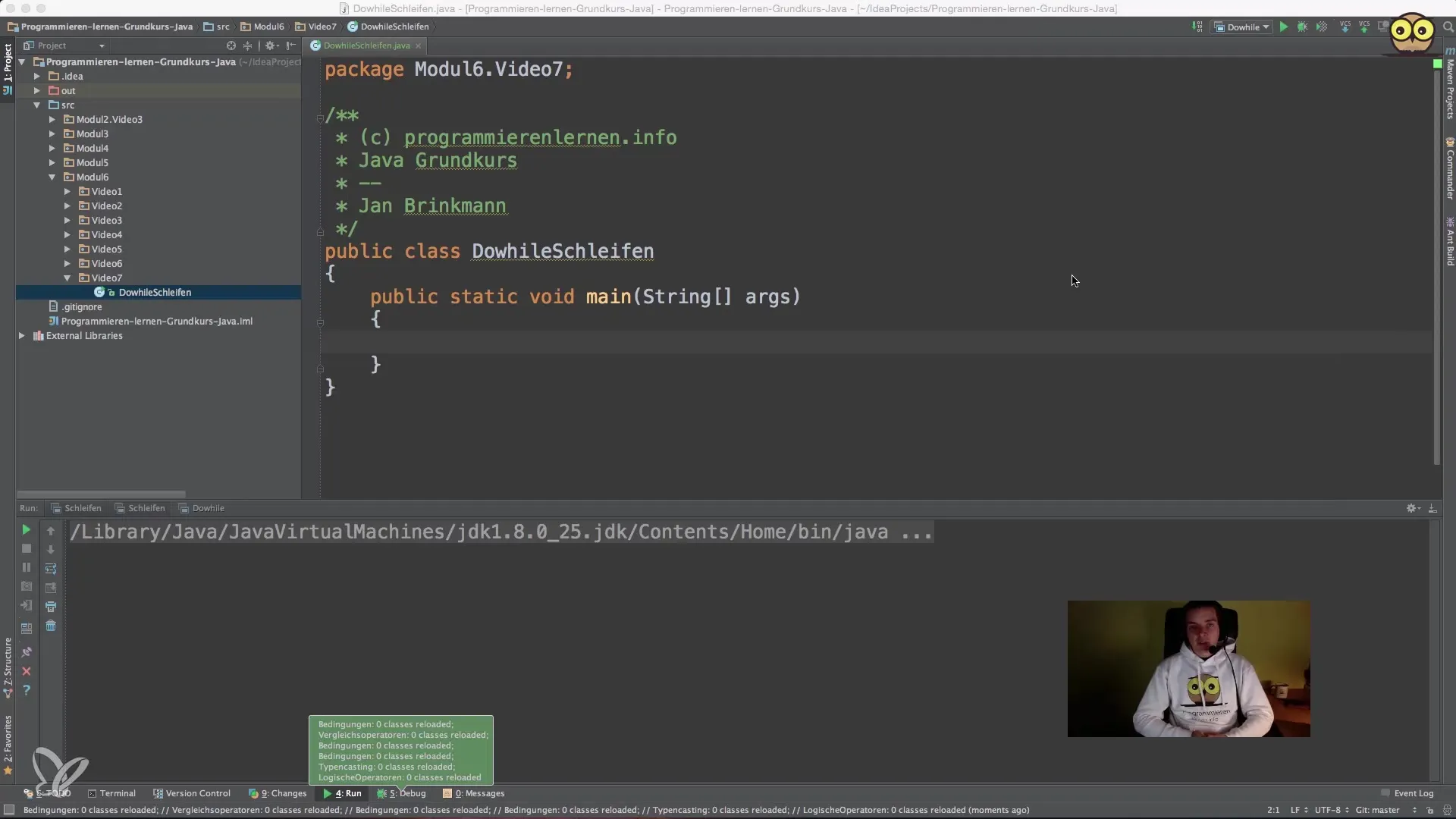You are on your way to learning the basics of Java. In this section, we will focus on a special loop, the do/while loop. This loop differs from other loops in Java and has its own specific use cases. Let's explore together how you can use this loop effectively.
Key takeaways
The do/while loop executes its block at least once, regardless of whether the condition is met or not. This makes it ideal for applications where an input is required before the condition is checked.
Basics of the do/while loop
The do/while loop is a form of repetition that allows you to execute a block of code multiple times. It starts with the keyword do, followed by the code block to be executed. After the curly brace, the condition follows, which is formulated with the keyword while. This condition is only checked after the first execution of the code block.

In this example, the code in the block is executed at least once before the condition is checked. If the condition is true, the loop starts again.
Application example
To better understand the concept, let’s take a look at a practical example. Imagine you want to develop a simple game where the user has to guess which hand a figurine is hidden in. The do/while loop is perfect for such an interactive game.

We start by initially defining a variable for the correct answer and another for the number of attempts.
Now we define the do/while loop that prompts the user for input until the answer is correct.
Here, the user is asked whether the figurine is in the left or right hand. The choice is stored in the variable choice.
The loop will run as long as the variable antwortRichtig is set to false, which means the answer is still incorrect.
Logic to check the answer
Within the loop, we now need to check if the user input is correct. This is done with a simple if condition.
If the input is "left", the variable antwortRichtig is set to true, which ends the loop. Otherwise, the user is informed that the answer is incorrect.
Incrementing the loop counter
It is important that we increment the loop counter i after each attempt so that we can keep track of the number of attempts. This is done by using i++ at the end of the loop.
In this way, the user can see how many times they have already tried.
The complete do/while loop
Let's bring everything together. This is how the entire do/while loop for the game could look.
do { String choice = JOptionPane.showInputDialog("Is Mario in the left or right hand? Attempt: " + i);
} while (!antwortRichtig);
With this code, you know how to use the do/while loop in an interactive program. The block is executed at least once, and only after that is the condition for checking the input actually entered.
Summary – Application of the do/while loop in Java
Throughout this guide, you have learned about the do/while loop as a powerful tool in Java. This loop has the special advantage of executing its code block at least once before the condition is checked. This feature is especially useful in situations where user interaction is required.
Frequently Asked Questions
What is the main difference between a do/while loop and a while loop?The main difference is that the do/while loop executes the code block at least once before the condition is checked. In contrast, the while loop checks the condition first.
When should I use a do/while loop?A do/while loop is particularly useful in situations where you want to ensure that the code is executed at least once, such as for user inputs.
Could I use the do/while loop in other programming languages as well?Yes, many programming languages support a similar syntax for the do/while loop. Most concepts are comparable, even if the specific implementation may vary.


